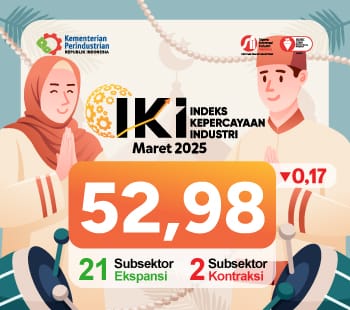Global Broadband Speeds Plummet During COVID-19 Lockdown Periods
By : Krishna Anindyo | Friday, July 31 2020 - 18:15 IWST

Ilustration Global Broadband Speeds (Photo by Liputan6.com)
INDUSTRY.co.id - Cable.co.uk has analysed data from over 364 million broadband speed tests (M-Lab) in 114 countries which instituted COVID-19 lockdowns (OxCGRT) to measure differences in average broadband speed inside and outside of lockdown periods during the first half of 2020.
Average speeds during COVID-19 lockdown measures that limited people's behaviour, in the 114 countries that instituted such lockdowns, dropped by 6.31% on average.
Regionally, more pronounced drops in average speed during COVID-19 lockdown periods were evident. Particularly in Central America (-26.03%), Northern Africa (-17.77%), Asia (Excl. Near East) (-16.33%), South America (-16.11%), and Sub-Saharan Africa (-14.24%).
Two of the 13 regions included in the study measured small gains in network speed during their lockdown periods – Caribbean (+3.49%), and Baltics (+0.41%). All 11 others saw drops.
The five countries whose average internet speeds dropped the most during their lockdown periods were China (-50.97%), Panama (-48.99%), Madagascar (-37.71%), Chile (-36.77%) and Peru (-36.76%).
Western Europe, with its broadly capable network infrastructure, was among the regions with the smallest average drop in measured speeds, with a regional drop of -4.66% during lockdown periods compared to time outside of lockdowns.
The UK experienced a relatively insignificant drop of -1.70% during its own lockdown period. However, Finland (-24.81%), Netherlands (-13.01%), Austria (-10.47%). Italy (-10.44%), and Norway (-7.38%) all experienced significant drops in the average speed recorded.
You can download the full data set including both country and regional figures, a detailed research methodology description, and use our interactive map via this study's landing page – please link either to this or to our homepage if you intend to use our data. Please see the editor's notes for more information concerning this request.
EMBARGOED UNTIL Tuesday, 4 August, 2020: Cable.co.uk has analysed data from the Oxford Coronavirus Government Response Tracker (OxCGRT), and over 364 million broadband speed tests courtesy of M-Lab (led by teams based at Code for Science & Society; New America’s Open Technology Institute; Google, Inc; Princeton University’s PlanetLab) to compare average internet speeds in 114 countries during and outside of their most stringent COVID-19 lockdown periods.
Using OxCGRT's stringency index, which tracks government lockdown measures that specifically limit the behaviour of populations, analysts at Cable.co.uk measured, per country, speeds both during and outside of the most stringent lockdown measures falling between 1 January 2020 and 30 June 2020. In the 114 countries that instituted such lockdowns, speeds dropped by an average of -6.31%.
The region where speeds dropped by the greatest percentage overall was Central America, with an average drop of -26.03% during its combined lockdown periods. Only one of the six countries qualifying in this region experienced a rise (Costa Rica at +0.82%).
Meanwhile, Panama (-48.99%), Guatemala (-14.30%), Honduras (-3.69%), Mexico (-2.35%), and El Salvador (-0.01%) all experienced drops in speed of varying severity.
Northern Africa recorded the second-highest overall drop in internet speeds during lockdown periods, with all five qualifying countries in minus figures. Libya (-27.38%) recorded the largest drop, followed by Tunisia (-23.23%), Morocco (-18.72%), and Algeria (-13.76%). Egypt's internet speeds experienced the smallest drop at -5.96%.
In Asia (excluding Near East), internet speeds dropped by -16.33% on average for the region. 12 of the 19 qualifying countries experienced slower internet speeds during their lockdown periods, with China (-50.97%) showing the largest drop both in the region and the world.
South Korea (-30.45%), Malaysia (-29.51%), Sri Lanka (-23.29%), Bangladesh (-21.76%), India (-21.05%), and Nepal (-20.77%) also experienced significantly slower speeds during their lockdowns. Afghanistan (+23.95%), and Vietnam (+12.84%), bucked the trend in this region, showing statistically significant increases in speed during their lockdowns.
South America showed an average drop in internet speeds of -16.11%, with seven out of the 11 qualifying countries measuring drops in speed during their lockdown periods. Chile (-36.77%), Peru (-36.76%), Paraguay (-29.91%) and Bolivia (-21.45%) experienced the most precipitous drops in measured speeds. Conversely, small increases in speed were measured in Guyana (+8.51%), Brazil (+3.55%), and Uruguay (+2.37%) during their lockdown periods.
In Sub-Saharan Africa, 13 of the 14 qualifying countries recorded drops in measured internet speeds during their lockdown periods, with an average decrease of -14.24%. Angola bucked the trend in the region, showing a surprising increase of +117.19% during its lockdown period.
Meanwhile, Madagascar (-37.71%), Cote d'Ivoire (-30.77%), Ghana (-24.58%), and Nigeria (-20.84%) experienced the largest drops in measured speeds during their respective lockdowns.
The two qualifying countries in Oceania combined exhibited an average drop in measured internet speeds of -12.05%. However, this is due to New Zealand alone, which experienced a drop of -17.88%. Australia actually showed a small rise in measured speed of +5.38% during its lockdown period.
CIS (Former USSR) countries experienced an average drop in measured speeds during lockdown periods of -6.12%, a number very close to the global average. Four out of six qualifying countries in the region were measured to have experienced drops in internet speeds.
Kyrgyzstan (-36.48%) and Russia (-12.60%) were measured to have the most pronounced drop in internet speeds during their lockdowns. Meanwhile, Ukraine (+14.86%), and Uzbekistan (+7.55%) saw small rises.
Western Europe (-4.66% overall) shows an interesting picture, with 12 of its 15 qualifying countries exhibiting measured drops in internet speed during their lockdown periods. However, Ireland (-2.23%), United Kingdom (-1.70%), Portugal (-0.19%), and Switzerland (+2.90%) all exhibit changes in speed that should be considered somewhat negligible.
The countries showing the largest drops in average speed during their lockdown periods were Finland (-24.81%), Netherlands (-13.01%), Austria (-10.47%), and Italy (-10.44%).
Northern America – a region with only two qualifying countries – averaged a drop in lockdown internet speeds of -2.91%. Speeds in Canada fell by -10.82% during its stringent lockdown period. Meanwhile the United States actually saw a small rise in speeds during its lockdown period (+3.32%).
On average, the Near East region, comprising 14 qualifying countries, saw almost no change during its combined lockdown periods, with internet speeds down just -1.49% on average. Six countries recorded drops in average speed, seven gains in speed both small and large, and one (Qatar) was one of only two countries in the study to show no change at all (0.00%).
The countries which recorded the largest drop is speed were United Arab Emirates (-18.42%), Israel (-14.59%), Saudi Arabia (-12.62%), and Yemen (-11.69%).
Eastern Europe measured an average drop in measured internet speeds during lockdowns of just -1.17%. A majority of the countries in the region showed almost no change. However, Hungary saw a drop in speeds of -13.26%, while at the other end of the scale significant rises were measured during lockdown periods in Moldova (+25.54%), and Bosnia and Herzegovina (+45.33%).
The Baltics, comprising three qualifying countries, saw the closest to no change of any region in this study, with a positive change of just +0.41%. Lithuania (-8.87%), and Estonia (-5.97%) both saw small drops in speed during their lockdowns, while Latvia (+17.91%) saw instead a fairly pronounced rise.
The Caribbean appears to have fared best overall as a region, though only four countries qualified for measurement. Dominican Republic (-26.52%) was the only country in the region to experience a drop in speed during its lockdown. Puerto Rico (+0.75%), Jamaica (+7.68%), and Trinidad and Tobago (+19.16%) all saw rises in speed during their lockdown periods.
Commenting on the findings, Dan Howdle, the consumer telecoms analyst in charge of the study at Cable.co.uk, said:
“We set out to identify changes in network speeds in countries around the world which had instituted lockdown policies that put restrictions on populations that may cause more time to be spent at home, and thereby more time spent using the internet. Thanks to the Oxford COVID Government Response Tracker (OxCGRT) and its highly useful stringency index, we were able to pinpoint the precise period in each country where lockdowns were at their most life-limiting, and match them up with over 364 million (M-Lab) speed tests”.
"The results are startling. Although an overall drop of just -6.31% across all countries doesn't sound like an awful lot, this figure moves very much against the tide. Our annual global broadband speed tracker has demonstrated global increases of around 20% year-on-year since 2017. For the majority of countries in this study to be moving in the opposite direction during their COVID-19 lockdowns, then, is all the more significant”.
"While it is impossible to attribute direct causality, our study shows a high correlation between lockdown periods around the world and dips in measured internet speeds, with some regions of the world measuring the most substantial drops, and others more or less unchanged. The picture is an interesting one indeed, and I hope our work will be of interest to anyone who seeks to further understand the influence of stringent lockdown measures on network capacity and capability."
Read Also
Indosat Ooredoo Hutchison Demonstrates Swift Response in Network…
Hillstone Networks Included in Security Service Edge Solutions Landscape…
ADIO and Gradiant Forge Water Security Partnership
Ignite Life for Future -- The 2023 International Forum on Life Science…
Abu Dhabi’s Advanced Technology Research Council launches ‘AI71’…
Today's Industry

Sabtu, 26 Juli 2025 - 08:54 WIB
ALGA Launches Indonesia's First Eco-Friendly Bedding in Collaboration with Wisewool New Zealand
ALGA Launches Indonesia's First Eco-Friendly Bedding in Collaboration with Wisewool New Zealand

Rabu, 09 Juli 2025 - 08:55 WIB
Indonesia's First Harman Professional Experience Center Opens in Jakarta
PT Inti Megah Swara (IMS Indonesia) announces the grand opening of the country's first Harman Professional Experience Center, located at Desound Melawai, South Jakarta.

Senin, 09 Juni 2025 - 14:22 WIB
Savyavasa and Permata Bank Launch Exclusive Foreign Mortgage Program
Savyavasa, a luxury residential development by Swire Properties and JSI Group under PT Jantra Swarna Dipta, in collaboration with Permata Bank, presents a new solution for foreign nationals…

Rabu, 21 Mei 2025 - 10:09 WIB
Indonesia, Thailand Sign MoU on Health Sector, Focusing on Global Capacity, Collaboration
As a part of President Prabowo Subianto’s official visit to Thailand, both countries signed a Memorandum of Understanding (MoU) on health sector, in an effort to strengthen bilateral cooperation…

Rabu, 21 Mei 2025 - 10:06 WIB
Indonesia, Thailand Deepen Cooperation on Security, Trade, and Regional Stability
resident Prabowo Subianto has reaffirmed Indonesia’s strong commitment to deepening bilateral relations with Thailand during the meeting with Thailand’s Prime Minister Paetongtarn Shinawatra…

















News Comment